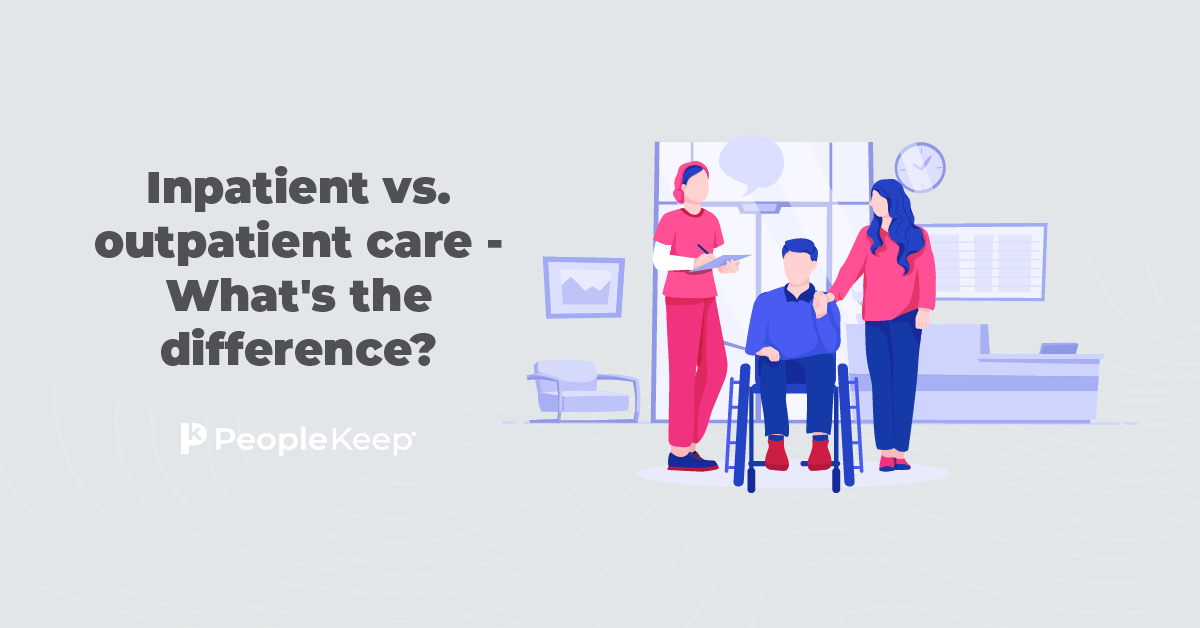What is telemedicine and how can I pay for it?
By Elizabeth Walker on February 21, 2024 at 8:30 AM
If you’re in the U.S., you’ve probably scheduled a video call with your doctor at some point rather than visiting their office in person. This practice is known as a “telemedicine” appointment. While telemedicine isn't a new medical service, its convenience has recently made it more popular than ever. In 2022, about 74.4% of physicians in the U.S. used telehealth and videoconferencing to treat patients1.
With telemedicine, people can meet with their doctors more quickly to receive medical consultations, health services, and prescriptions. That’s why 84% of employers believe offering health coverage for virtual and in-person services is crucial to keep employees happy2. But many wonder if they must pay for virtual appointments the same way as in-person doctor visits.
This article will cover everything you need to know about telemedicine, including its covered services, pros and cons, and how to pay for your virtual appointment.
Takeaways from this blog post:
- Telemedicine provides convenience by allowing patients to attend virtual appointments from anywhere without entering a physical office. While it’s unsuitable for emergencies, patients can use it for simple concerns like prescription refills, reviewing lab or X-ray results, mental health treatment, and more.
- Telemedicine can prevent the spread of disease by reducing the need for in-office patient visits, especially in times of health crises. It also allows at-risk patients to receive chronic illness management by safely meeting with their primary care physicians or specialists from a distance.
- Many health insurance providers now cover telehealth services. However, employers can offer health reimbursement arrangements (HRAs) or health stipends to help offset the cost of telemedicine appointments and other out-of-pocket expenses.
What is telemedicine?
Telemedicine is a way of receiving medical care or counseling from a physician virtually through telecommunications instead of through an in-person office visit.
While most people use the terms telemedicine and telehealth interchangeably, they’re somewhat different. Telehealth goes beyond telemedicine because it covers non-clinical practices, like appointment scheduling, continuing medical education, and physician training3.
Using telemedicine, you can discuss symptoms or health concerns with your physician or another health professional on your computer, tablet, or phone. You can often receive a diagnosis, review treatment options, and get prescriptions during your appointment.
The four common types of telemedicine are:
- Synchronous: Also called “live telemedicine,” synchronous telemedicine is when a doctor and patient communicate in real-time through video visits or phone.
- Another kind of live telemedicine visit is a facilitated virtual visit where the patient is at a specific site, like a health clinic, to access the diagnostic equipment needed, and the doctor is at a remote site.
- Asynchronous: Often referred to as the “store-and-forward” method, this lets providers and patients share electronic health records, medical records, and other information before or after telehealth visits via email, fax, or over the phone.
- Remote monitoring: Remote patient monitoring allows for continuous observation of a patient’s medical condition, whether through direct video monitoring or through tests, digital images, or mobile medical equipment, which physicians then collect remotely.
- Mobile health (mHealth): Mobile health is when organizations share healthcare and public health information via mobile devices. Shared information may include general health educational information and disease outbreak alerts.
What types of services can I get using telemedicine?
Telemedicine isn’t practical for emergencies, like a health attack or stroke. However, telemedicine is helpful for simple concerns and consultations.
For example, you can speak with your primary care provider through your computer if you’re on vacation and get sick with the flu. Or, if you need a regular prescription refilled, you can chat with your doctor and get a same-day prescription sent to your pharmacy.
Your current provider will decide whether a telemedicine or in-person visit is appropriate for your specific health needs; however, a wide range of virtual services are typically available.
Services that you can generally receive through telemedicine include:
- Review lab or X-ray results
- Mental health treatment, including online therapy and counseling
- Recurring conditions, like migraines or urinary tract infections
- Skin conditions
- Prescription management
- Urgent care clinic issues like colds, coughs, and stomach aches
- Post-surgical follow-up visit
- Physical therapy and occupational therapy
Telemedicine isn’t just about receiving care. Your physician can also use telehealth solutions to send or request information about your health for their patient records.
Information your doctor may ask you to send them virtually can include:
- Your vital information, such as weight, blood pressure, and blood sugar levels
- Pictures of a wound or injury
- A document detailing your symptoms
- Medical records that may be on file with another healthcare provider, such as X-rays or lab tests
Your doctor may also send you certain medical information, such as:
- Notifications to take or refill your medication.
- Reminders to schedule follow-up appointments.
- General medical advice on improving your diet, mobility, or stress management to help you reach your health goals.
- Detailed instructions on managing and treating your health condition at home and what critical symptoms you should watch out for.
What are the advantages of using telemedicine?
1. Convenience
There’s no doubt that one of the best benefits of telemedicine is its convenience. If you have access to the internet, you can attend virtual appointments from any location without needing to go into a physical office, making it especially beneficial for those in rural areas, elderly patients with limited mobility, and those without transportation.
With more businesses going remote, it’s convenient for employees, too. Due to its popularity, one survey found that 32% of employers offered telehealth solutions in 2023, while 69% said they may offer these services in 20254.
2. Greater disease control
Using telemedicine in a health crisis is particularly effective in preventing the spread of infectious diseases in your community.
One study found that 96% of physicians and 59% of psychotherapists reported fewer in-office patient visits since the COVID-19 pandemic began5. In an outbreak, telemedicine helps keep patients healthy and provides safe access to care, especially for those with immunodeficiencies, by limiting physical contact and implementing social distancing.
3. Easier chronic illness management
Telemedicine makes it significantly easier for at-risk patients, such as those with a chronic health condition or chronic pain, to meet with their primary care physician or medical specialist regularly. If you have a family member who is elderly, telemedicine appointments also allow you to attend virtual visits and participate in the care of your family member from a distance.
Remote healthcare services can be vital for those with chronic conditions, particularly if they have limited movement or travel time. During check-ins, doctors can observe the patient remotely, create an ongoing treatment plan, and look for potential health dangers that may worsen their condition.
What are the disadvantages of using telemedicine?
1. Reduced quality of care
Telehealth isn’t a perfect fit for every patient or medical condition, as there’s a potential for gaps in healthcare, overuse of care, or unnecessary patient care.
For example, a telemedicine provider may delay your treatment if you think you have a simple cold, but it turns out to be something more serious that requires emergency care. Also, each time you access telemedicine consultations, you may receive a different physician, resulting in reduced care continuity with that doctor having access to your complete medical history.
Lastly, the physical separation that telemedicine inherently creates makes it hard to form a personal connection with your doctor. You may never get a chance to bond with or personally meet them, which can be isolating if you’re elderly, have a chronic disease, or are looking for a family doctor.
2. Diagnosis errors
When providers can't physically examine you in person, you risk getting the wrong diagnosis. Telemedicine can support many acute care illnesses, but specific ailments require a face-to-face assessment. This means your doctor may be unable to diagnose you properly in a remote setting.
Another potential pitfall is that telemedicine requires patients to describe their symptoms clearly to their doctor. If a patient forgets to mention a symptom or describes it inaccurately, their diagnosis may not be correct.
With all the benefits of telehealth, doing every visit remotely is impossible. Sometimes, you’ll still have to see your doctor for in-person care, like imaging tests, blood draws, and hands-on procedures, to get the most accurate diagnosis possible.
3. Potentially limited access
While many individuals have access to the internet or a mobile device these days, not everyone does. People without access to this telemedicine technology may be unable to use these services.
Even if some public spaces, like libraries or community recreation centers, have free wireless internet access, those who need transportation may not be able to get there for their appointment.
There’s also the issue of technical or system problems. As with all technology, your internet can drop, wireless connections malfunction, and videos freeze. This can cause patients and providers to become frustrated with the remote setting and opt for the in-person visit instead.
How can I pay for telemedicine?
In the past few years, most health insurance providers and programs expanded to cover some telehealth services, including federal Marketplace plans, Medicare, Medicaid, and private health insurance companies. Some states even have laws requiring health insurance plans to reimburse telemedicine visits at the same rate as in-person care, known as payment parity6.
However, not all employers offer a group health insurance plan. If you have a health reimbursement arrangement (HRA) or health stipend from your employer, don’t worry! You can use both benefits to pay for telemedicine and other related out-of-pocket costs if your employer allows it.
Let’s review both options below and how they work with telehealth services.
Health reimbursement arrangements
Any visits you have with a doctor—whether in-person, over the phone, or through video chat—are reimbursable through an HRA as long as your employer allows out-of-pocket medical expenses. An HRA is an employer-sponsored health benefit designed to reimburse you, tax-free, for a wide range of medical services and qualified out-of-pocket expenses.
To get your appointment reimbursed through your in-person or telemedicine HRA, you must submit documentation showing proof of purchase.
Your proof of purchase needs to include:
- The specific service you received
- The date you received the service
- The cost of the service to you
Additionally, the Coronavirus Aid, Relief, and Economic Security Act (CARES) expanded reimbursement health plans, like health savings accounts (HSAs), flexible spending accounts (FSAs), and HRAs, to cover telemedicine and remote care services before a participant meets their deductible.
However, your insurer may still require you to pay normal cost-sharing amounts—like copayments—for telemedicine visits after you meet your deductible.
Health stipends
Another way to pay for telemedicine appointments is with a health stipend. Health stipends are a fixed amount of money employers provide to employees that they can use to purchase individual health insurance plans and out-of-pocket medical expenses, including telemedicine services.
Because they’re essentially grossing up wages, stipends are taxable income for employees. However, they’re less regulated than group health insurance or HRAs, so stipends are a great option if you want more flexibility and choice regarding what you can use your stipend money to purchase.
Conclusion
If you’re feeling sick or have a health concern, you can get medical care with a telemedicine appointment at the click of a button. Virtual appointments don’t remove the necessity of in-office doctor visits. Still, they certainly make receiving medical services for certain types of care more accessible and faster for millions of Americans.
If your employer is offering you an HRA, you can get significant savings on a wide variety of healthcare expenses, including telemedicine appointments, all tax-free. With these two benefits, getting reimbursed for expert medical counseling and care from the comfort of your home is easy, giving you more flexibility and peace of mind.
Schedule a call with us to learn more about how personalized health benefits can help you!
This article was originally published on October 27, 2021. It was last updated on February 21, 2024.
1. https://www.ama-assn.org/system/files/2022-prp-telehealth.pdf
5. https://www.ncbi.nlm.nih.gov/pmc/articles/PMC8620328
6. https://telehealth.hhs.gov/providers/billing-and-reimbursement/
7. https://www.ama-assn.org/system/files/ama-state-telehealth-policy-trends-2023.pdf
Check out more resources
See these related articles

What is coinsurance?
Understanding coinsurance is essential for managing your healthcare expenses. Learn everything you need to know about coinsurance in this helpful article.

What can an HRA reimburse?
Wondering if your HRA can cover specific medical costs? Discover the comprehensive list of eligible expenses that your HRA can reimburse in this article.

Inpatient vs. outpatient care - What's the difference?
Curious about the difference between inpatient and outpatient care? We break down the key distinctions to help you make informed healthcare decisions.



